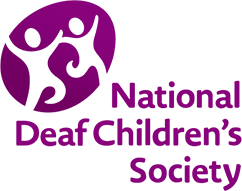My tips for hearing parents of deaf babies
Published Date: 15 May 2025When we found out Beatrice was deaf at 3 weeks old, we were very confused and felt very alone as we didn’t know any deaf people. Meeting our Teacher of the Deaf (ToD) started to restore some order.
Nowadays, we attend a weekly deaf preschoolers' group (run by ToDs), and I follow various deaf and British Sign Language (BSL) pages and groups on Facebook. I feel more connected to a community, and I hope Beatrice does too.
Here are some of things we figured out in Beatrice’s first year, in the hope they might help another struggling hearing parent of a deaf baby!
Don’t panic, and be gentle with yourself
Parent guilt and crazy hormones mean that you will probably be beating yourself up about something or other, so try not to add worries about hearing aids and deafness! Be proud of your wonderful baby.
Try and get a ToD
If your child is bilaterally deaf, they should have a ToD, but unfortunately not every unilaterally deaf child is eligible. Your audiologist or the National Deaf Children's Society (NDCS) should be able to advise you if you do not already have one.
Our ToD is a light in the darkness. She gives us advice about all sorts of things, checks Beatrice’s aids, assesses her progress, helps us talk through related medical issues… I really don’t know what we would do without her. If you do not think your ToD is giving you the support you need, you are entitled to escalate it.
Read to your baby
All the advice I was given said you must face your baby to read so they can see your face. That’s all very well, and certainly the ideal, but it made me not want read to Beatrice as I couldn’t find a way for me to face her. She didn’t sit until she was 11 months, and it was hopeless trying to prop her up. In the end, we read to her on our laps. At 3, she is a total bookworm.
Just read to your child, it doesn’t matter how you do it! Aids in or out, facing you or away – they will love to see the pages and be close to you.
Learn some BSL signs
I always liked the idea of ‘baby sign’, but when Beatrice was a few months old, I found a class which used BSL signs. She used her first sign (‘milk’) when she was 9 months, and it was indescribable how good it felt that she could tell me specifically what she wanted.
She maxed out at 60 signs and now chooses to talk instead of sign. However, we use Sign Supported English (SSE) when she can’t hear, for example, when her aids are out or we're in busy places.
If you can’t make it to a class, there are some great books for you to learn signs with your child. It’s OK to make up signs – no one will judge you!
Find out more about learning BSL.
Plan for hospital and clinic appointments
You will probably be attending a lot of appointments. Write down questions beforehand, and do not be afraid to bring out your notebook and pen in the appointment. Do not worry about asking questions or for things to be repeated.
If you can, bring a second adult so that one of you can wrangle the baby and the other can pay attention. I definitely recall saying to Will in the car home, “It’s interesting that the doctor said that,” only for him to reply, “What?! She said the opposite!”
Keep records
Keep and file all the letters and appointment letters, unless you have them available online (for example, MyChart). You may need them.
Consider applying for Disability Living Allowance (DLA)
When your baby is a few months old and the fog of newborn-ness has cleared, think about applying for DLA. Not every deaf child is eligible, but if they might be, ask your ToD or NDCS about it.
Having a deaf child is pretty expensive (think hospital parking, additional car trips to deaf groups) so the money is very welcome, but also it can open other doors such as childcare funding and reduced entry for parks and so on.
You will need to have lots of evidence, including medical letters, if you apply.
All children will have a phase of pulling out their hearing aids
Your ToD may have some suggestions if this is happening, but you can buy equipment such as hats and bands. Beatrice wore a headband from about 3 to 15 months. This stopped her aids flopping around, gave us a talking point for passers-by about her deafness, and looked super cute!
